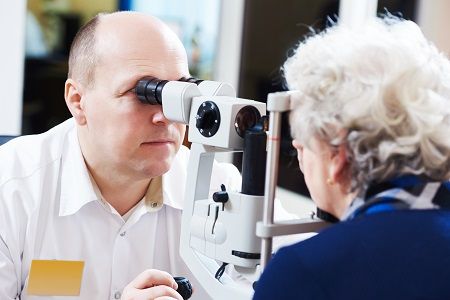Vision Problems More Common in Patients with Parkinson Disease
Study data suggested that up to 80% of patients with Parkinson disease may have ophthalmologic symptoms.

This article, “Vision Problems May Be Common in Parkinson Disease,” was originally published on NeurologyLive.
Results of a new study have uncovered a link between the development of Parkinson disease and an increase in ophthalmologic symptoms that impact a patient’s day-to-day activities.
The study, which included 848 patients with Parkinson and 250 healthy controls, showed that 82% (n = 695; 95% CI, 80—85) of those with disease had ≥1 ophthalmologic symptom in comparison with 48% (n = 120; 95% CI, 42–54) of the control group (F1 = 118.53; P <.001). Study author Carlijn D.J.M. Borm, MD, of Radboud University Medical Centre in Nijmegen, The Netherlands, and colleagues noted that screening questionnaires like the Visual Impairment in Parkinson's Disease Questionnaire (VIPD-Q)—which the study utilized—may aid in recognizing these vision problems, thus improving timely treatment.
“It is especially important for people with Parkinson’s to have the best vision possible because it can help compensate for movement problems caused by the disease, and help reduce the risk of falls,” Borm said in a statement. “Our study found not only that people with Parkinson’s disease had eye problems that go beyond the aging process, we also found those problems may interfere with their daily lives. Yet a majority of eye problems are treatable, so it’s important that people with Parkinson’s be screened and treated if possible.”
Those with Parkinson experienced vision symptoms across all domains at a higher rate than controls (P <.001), with a median VIPD-Q total score of 10 (interquartile range [IQR], 13) compared to the control group median score of 2 (IQR, 5). The Parkinson group recorded higher rates of symptoms on ocular surface (blurry vision with screens, burning/gritty feeling, mucus/slime build-up, watery eyes; P <.001 for all), intraocular (reading challenges, wavy/blurred lines, poor night vision, headlight glare at night; P <.001 for all), oculomotor (poor identification of quick movements, double vision, unequal eyesight ability, depth perception issues; P <.001 for all), and optic nerve (pale colors, background separation issues, missing aspects of visual field, poor light adjustment, hallucinations; P <.001 for all) items.
Additionally, ophthalmologic symptoms were observed to interfere with daily activities in 68% (n = 576; 95% CI, 65—71) of patients with Parkinson, compared with 35% (95% CI, 29–41) of controls (P <.001). The greatest interference with daily activities for patients with Parkinson were observed with reading (52%; n = 440), driving (33%; n = 279), watching television (28%; n = 237), and working on the computer (28%; n = 237).
Furthermore, 53% (95% CI, 49—56) of those with Parkinson reported a moderate to severe impact of ophthalmologic symptoms on their quality of life, compared with only 16% (95% CI, 12–21) of controls (F2 = 97.17; P <.001).
Notably, those with Parkinson reportedly fell more frequently (4% daily or weekly, 28% once or twice a month) than those in the control group (0% daily or weekly, 12% once or twice a month; P <.001). Falling frequency did increase with a higher score on the VIPD-Q in both groups, and analysis revealed falling was related to higher scores after corrections (odds ratio [OR], 1.043; 95% CI, 1.03—1.06; P <.001; r = .049). A weak, though significant, correlation was identified between VIPD-Q total score and duration of disease (r = .18; P <.001), as well.
“Eye problems make it more difficult for people with Parkinson’s to physically navigate daily life, for example, we found that half of study participants experienced problems with reading, and 33% had eye problems that interfered with driving a car,” Borm said. “People with Parkinson’s who express that they have eye problems should be referred to a specialist for further evaluation. For those who do not express such problems, using a questionnaire to screen for problems that may otherwise be missed might allow for recognition, timely treatment and improving the quality of life.”